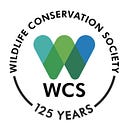The Time is Right for the EU to Step Up Its Fight Against Wildlife Trafficking
By Arnaud Goessens, Jorge Rios, and Olga Kuzmianok
October 28, 2022
The European Union (EU) is not immune from involvement in wildlife trafficking, and continues to be a major demand market, transit hub, and source for species of wild fauna and flora trafficked at a global scale.
Six European countries were suspected or known to be engaged in the captive tiger trade according to a 2020 report: Belgium, Czech Republic, France, Germany, Italy and the UK. Last March, news reports told of some 55 endangered turtles and tortoises illegally smuggled into Hong Kong making their way to Austria and Italy, whereas EUROPOL recently observed the resumption of trafficking in suitcases of the protected European glass eel, with the removal of COVID-19 travel restrictions.
At the same time, the COVID-19 global pandemic reminded us that the illegal wildlife trade not only threatens vulnerable species populations, it also provides a significant pathway for the transmission to people of pathogens previously contained in the wild — posing a global risk to public health, human well-being, and global economic security.
The EU has made significant progress on this issue, including the adoption of an EU Action Plan against wildlife trafficking in 2016 aimed at confronting the illegal wildlife trade. The plan contributed to increased political attention as well as greater effort and cooperation among EU Member States to combat wildlife trafficking. This goal was further re-affirmed in May 2021 by the Council of the European Union when it identified the EU’s priorities for the fight against organized crime.
Furthermore, on October 5 2022, the European Parliament adopted a Resolution on the EU’s strategic objectives for the upcoming meeting of the Convention on International Trade in Endangered Species of Wild Fauna and Flora (CITES) in Panama on 14th — 25th November 2022, calling for the EU to take strong action. The European Parliament members call for a complete elimination of all illegal trade in wildlife by 2025, and call on the EU to review and expand the existing legislation regulating wildlife trade.
The EU is currently developing an update of its Action Plan to combat wildlife trafficking, which we hope will address the issue in a holistic way.
While the EU is finally taking steps to consider environmental crime — including wildlife crime — as a serious crime, these efforts are not proportionate to the challenge ahead or the resources of the EU. Much more work needs to be done. The EU is currently developing an update of its Action Plan, along with other measures intended to combat wildlife trafficking, which we hope will address wildlife trafficking in a holistic way.
Our suggestions as to how that could be achieved include:
Amend National Legislation and Monitor Implementation on Domestic Ivory Markets
The EU recently unveiled new measures aimed at further restricting its legal domestic elephant ivory market. While the new measures are a step in the right direction, most restrictions are not currently legally binding and EU Member States should amend their national legislation accordingly.
Support and Facilitate Whole Supply-Chain Approaches
Moving ahead, a revised Action Plan should target the whole wildlife trafficking supply chain — from source countries to transit and consumer countries. There must be concrete actions that address wildlife trafficking in a truly holistic manner if the EU is to achieve successful, long-term results. Collaboration with the private sector, which includes the transport industry, internet platforms, and finance, is vital in order to detect and combat wildlife trafficking.
In consumer countries, EU efforts should focus on science-based and evidence-based behavior change initiatives to effectively reduce demand for illegal wildlife.
Increase Resources
At the very beginning of the supply chain, financial and technical support can help local authorities and communities to safeguard their environment and wildlife and support the law enforcement and criminal justice efforts to prevent and enforce legislation against the perpetrators. The EU is currently supporting several large-scale, regional initiatives that tackle wildlife trafficking in Asia, Africa, and Latin America.
To be fully effective, greater long-term EU financial support must be allocated to implement the recommendations of the reports Larger than Elephants, Larger than Tigers and Larger than Jaguars, and the findings of the EU study on security and wildlife trafficking — all commissioned by DG International Partnerships.
Promote Science-Based Approaches to Changing Behaviors
In consumer countries, EU efforts should focus on science-based and evidence-based behavior change initiatives to effectively reduce demand for illegal wildlife. Resources should be mobilized for Asia in particular where demand for illegal products is exceptionally high.
The COVID-19 global pandemic reminded us that the illegal wildlife trade provides a significant pathway for the transmission to people of pathogens previously contained in the wild.
Act Globally
Finally, we must recognize that wildlife trafficking must be addressed at the global level, through multilateral fora such as those related to CITES and the United Nations Convention against Transnational Organized Crime (UNTOC). We must also stimulate collaboration and partnerships, including through the International Consortium on Combating Wildlife Crime (ICCWC) partnership, civil society, and the Wildlife Inter-Regional Enforcement (WIRE) platform, on intelligence sharing to continue mapping out and dismantling criminal networks.
As the EU revises its Action Plan to tackle wildlife trafficking and prepares for the coming CITES Conference of the Parties in Panama this November, it has a window of opportunity to take further action to address wildlife trafficking both within its own borders and globally. By doing so, it will maintain its position as a global leader and encourage other countries to follow its example.
Arnaud Goessens is Associate Director for EU Policy at WCS EU, a European affiliate of the Wildlife Conservation Society (WCS).
Jorge Rios is Chief of the Environment Team globally at the United Nations Office on Drugs and Crime (UNODC).
Olga Kuzmianok is the Programme Officer at the Environment Team at the United Nations Office on Drugs and Crime in Brussels.
